Quick-Step's E3 Harelbeke dominance sets the tone for cobbled Classics
Collective strength presents problem for Van Avermaet and Sagan
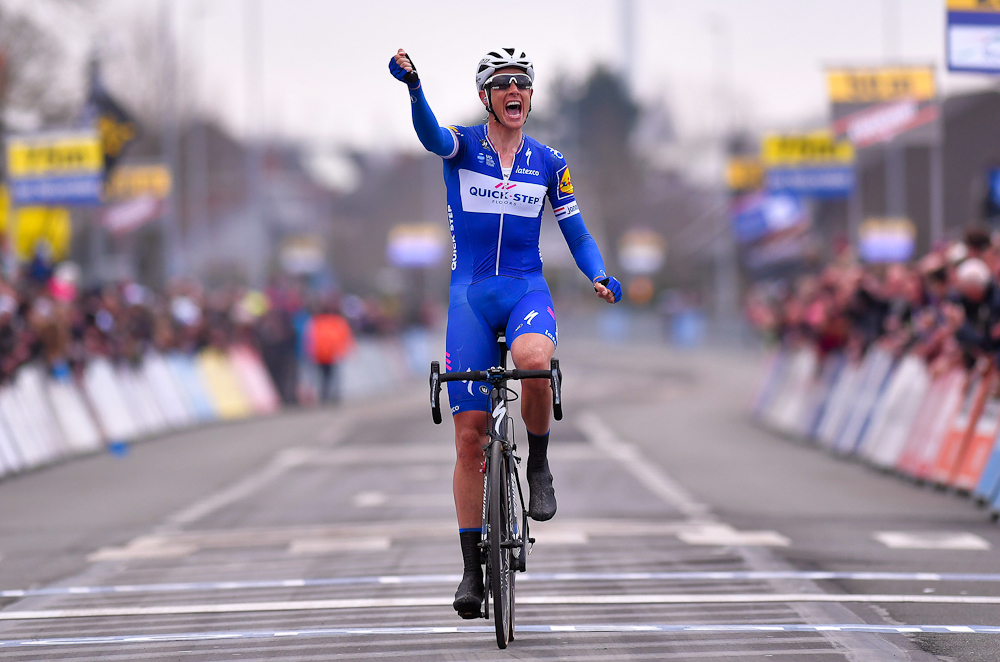
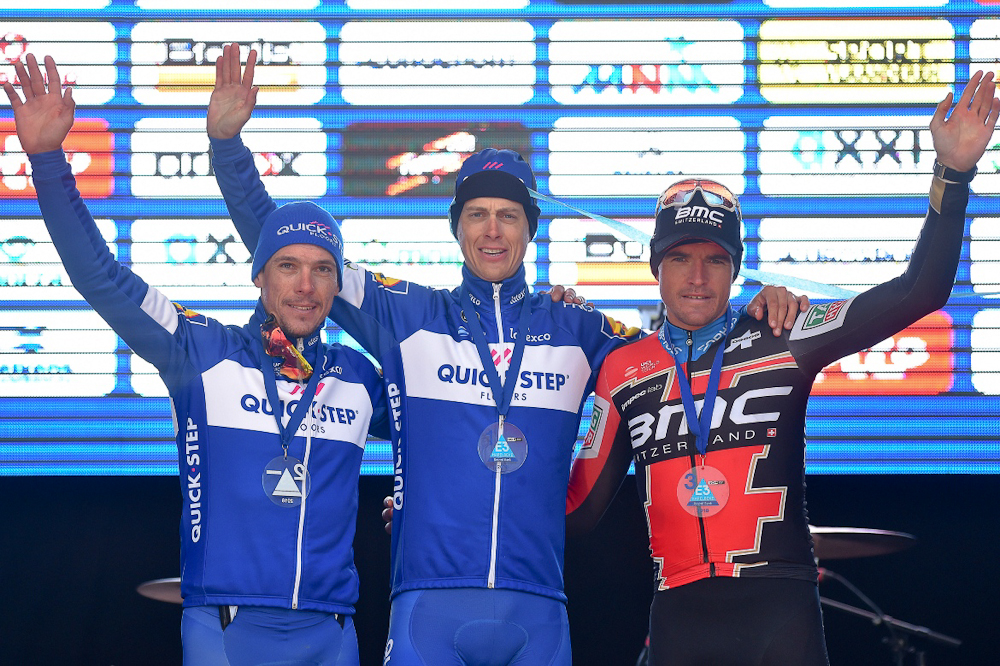
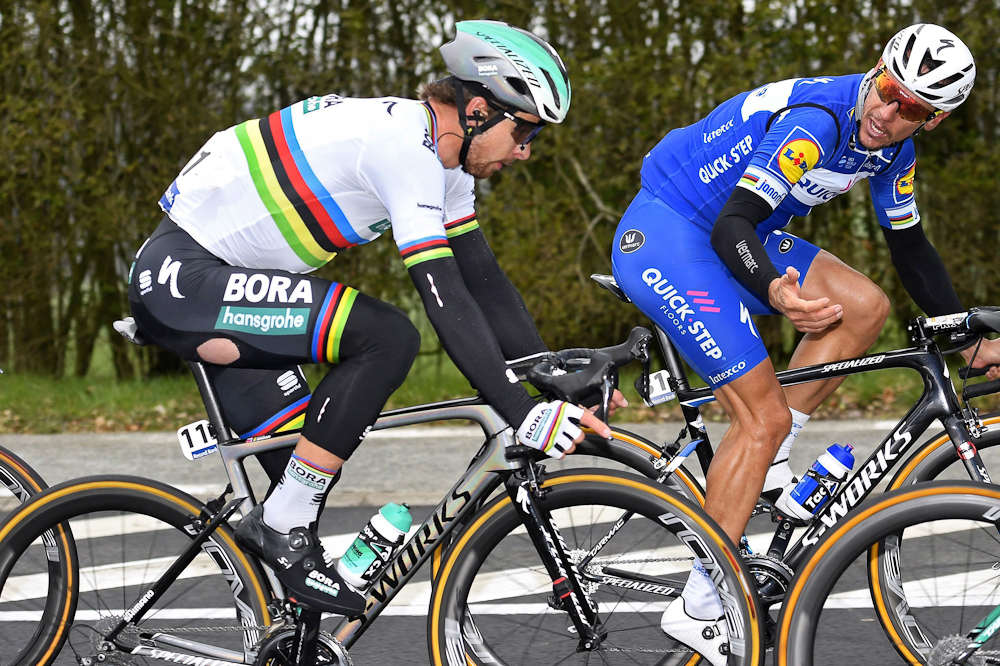
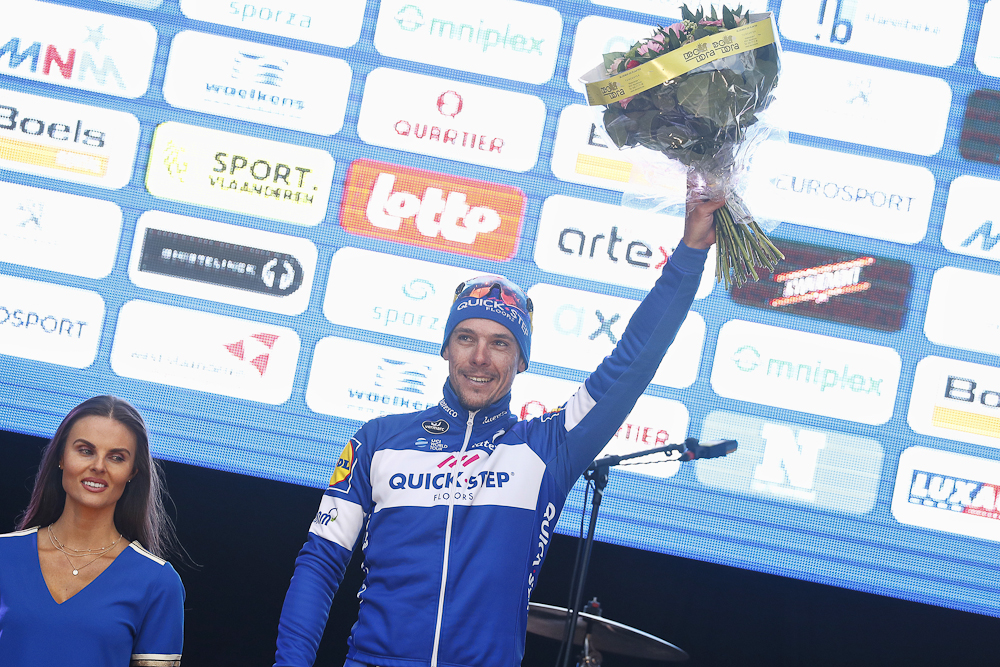
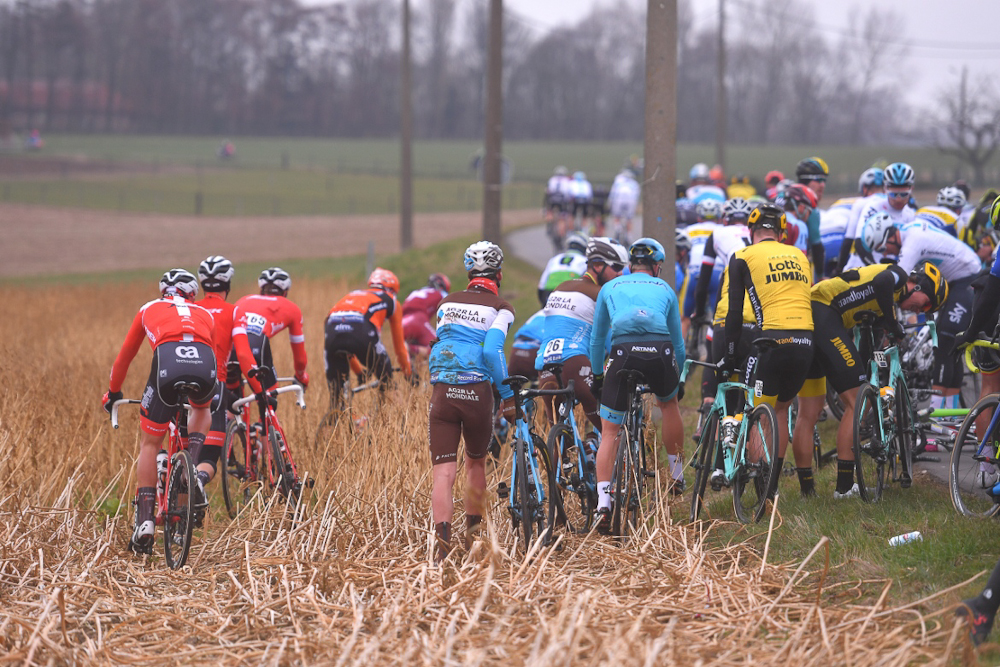
Much of the build-up centred on the chances of rainbow jersey Peter Sagan and 'golden' Greg Van Avermaet, the outstanding performers on the cobbles these past two years, but blue was the colour in the aftermath of E3 Harelbeke, as Quick-Step Floors delivered a strikingly dominant showing in the dress rehearsal for next weekend's Tour of Flanders.
Quick-Step Floors open pop-up store for the Classics - Gallery
Subpar Peter Sagan misses the boat at E3 Harelbeke
Quick-Step Floors defends E3 Harelbeke attack when massive crash split peloton
Benoot lays down Tour of Flanders marker at E3 Harelbeke
Van Avermaet makes the best of a bad situation in E3 Harelbeke
Vanmarcke fights back after E3 Harelbeke crash
Landa crashes but survives E3 Harelbeke in Tour de France practice session
Niki Terpstra soloed to victory while Philippe Gilbert won the sprint for second place behind him, but the podium photographs and the results sheet told only a portion of the story. Quick-Step's blue jerseys massed on the front a little under halfway through the race and there they stayed in various configurations all the way to the finish in Harelbeke.
"Racing as racing should be," read the enthusiastic headline in Het Nieuwsblad on Saturday, and the lead article was no less rapturous. "If every team raced like Quick-Step did between Harelbeke and Harelbeke, cycling would be a top global sport, bigger than any ball game."
Quick-Step certainly dominated ball possession, so to speak, at E3 Harelbeke. BMC, Bora-Hansgrohe et al could barely get a touch, as they were already forcing the pace after the descent of La Houpe when a large crash split the peloton and reduced the front group to 40 riders.
Come the Taaienberg, favoured climb of the now-retired Tom Boonen, there were five Quick-Step riders lined up at the head of the group. Terpstra and Yves Lampaert pushed on over the top, with some 70km to go, and simply kept on going, while Gilbert, Florian Senechal and Zdenek Stybar policed affairs behind.
Van Avermaet, Tiesj Benoot (Lotto Soudal) and a sub-par Sagan – a crash victim early in the race – were among those effectively marooned on Gilbert Island, as last year's Tour of Flanders winner tempered his usual attacking instincts to spend an afternoon serving as a deluxe spoiler in the Flemish Ardennes.
"It's not my favourite activity. It is anti-racing in a way but, voilà, it inevitably forms part of the tactics," Gilbert said after he won the group sprint for second ahead of Van Avermaet, 20 seconds down on the lone victor Terpstra.
Get The Leadout Newsletter
The latest race content, interviews, features, reviews and expert buying guides, direct to your inbox!
Gilbert showed one notable flash of his habitual aggression when Van Avermaet and Benoot almost dragged him to within touching distance of Terpstra and a visibly flagging Lampaert with 30km remaining. His sharp attack on the Karnemelkbeekstraat carried him well clear of Van Avermaet and Benoot, but rather than push on over the top in lone pursuit of his teammates, he eventually returned to his previous duty of hindering their rivals behind.
That Terpstra had not appeared in any mood to wait for additional reinforcements did not escape the attention of the Belgian press, though Gilbert promptly knocked any question of an internal rivalry on the head by pointing out how he had benefited from Terpstra's blocking in a similar situation at last year's Ronde. All the way back to Mapei, Patrick Lefevere has tended to find ways to imbue commitment to a common cause into a group of riders with competing ambitions.
"A missed chance? No, I don't think so. Last year in Flanders, I was the rider in front and the team helped me from behind," Gilbert said. "That's how it works at Quick-Step: team spirit prevails."
The beat goes on
Boonen's retirement last Spring was expected to weaken Quick-Step, but, much like with Johan Museeuw in 2004, the transition period had already begun even before the end of his career. The arrival of a seemingly rejuvenated Gilbert last year gave the team an obvious replacement figurehead, though in the season since Boonen's last Monument victory in 2012, the leadership hierarchy had already seemed more fluid.
As the years ticked by, Boonen became the preferred option among many rather than an outright, undisputed leader like his old rival Fabian Cancellara. He served as a decoy when Terpstra won Paris-Roubaix in 2014, for instance, and performed a supporting role as Gilbert claimed the Ronde a year ago. In his absence this year, Quick-Step continues in the same vein, with a multi-pronged approach to the Classics.
After drawing a blank on Opening Weekend in late February, Quick-Step have since won six races from six on Belgian roads, with five different winners. Terpstra has bookended the run with wins at Le Samyn and in Harelbeke, while Remi Cavagna (Dwars door West-Vlaanderen), Fabio Jakobsen (Nokere Koerse), Alvaro Hodeg (Handzame Classic) and Elia Viviani (Driedaagse Brugge-Da Panne) have also claimed the top step of the podium over the past month.
It makes for sobering reading for their rivals, and the collective show of force from Quick-Step on Friday will have made an even more indelible impression. Van Avermaet had two teammates at his disposal in the chasing group in the closing kilometres at Harelbeke, but BMC were inhibited by the presence of two Quick-Step dangermen and didn't manage to marshal a coherent pursuit.
"You had Gilbert who never did one pull, and Stybar also was not pulling, so it's a big risk," Van Avermaet said. "We tried to do our best but sometimes it's complicated in a race."
Van Avermaet and Sagan will undoubtedly be better at Gent-Wevelgem and the Tour of Flanders than they were at E3 Harelbeke: they will need to be at their best to solve a problem like Quick-Step.

Barry Ryan was Head of Features at Cyclingnews. He has covered professional cycling since 2010, reporting from the Tour de France, Giro d’Italia and events from Argentina to Japan. His writing has appeared in The Independent, Procycling and Cycling Plus. He is the author of The Ascent: Sean Kelly, Stephen Roche and the Rise of Irish Cycling’s Golden Generation, published by Gill Books.